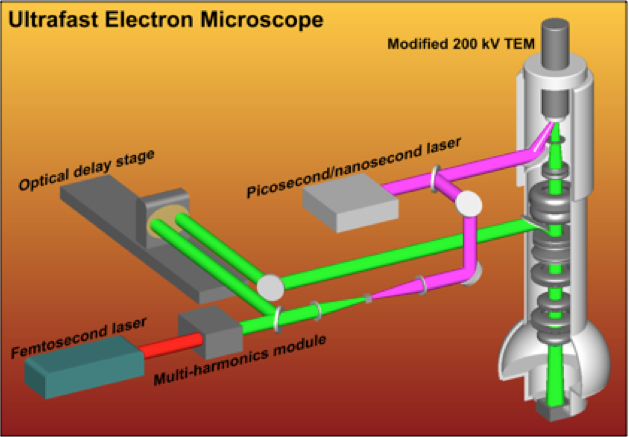Due to limited spatial resolution, energy propagation through a material is typically studied with experiments that must average over a large volume compared to atomic-scale features. Further, real-time probing of variations in lattice constants as energy propagates though a material requires femtosecond temporal resolution; phonons propagating at the speed of sound in Si travel 30 unit cells in one picosecond. Such challenges have constrained the understanding of how atomic-scale processes dictated by quantum mechanics are linked to the mesoscale, where continuum models suffice. This difficulty is compounded by defects, impurities, and grain boundaries. Flannigan will employ UEM to directly visualize atomic-scale energy propagation through noble metals (e.g., Ag) and polycrystalline graphene.

Schematic of Ultrafast Electron Microscopy
In UEM, a femtosecond laser pulse excites the specimen, and the lattice response is probed with precisely-timed photoelectron packets. Pertaining to electron-phonon coupling and energy carriers, Ag is an ideal choice, as the development of multi-scale two-temperature models for rationalization of the observed dynamics is not complicated by relativistic effects of the valence electrons. The effects of individual grain boundaries on energy transport in freestanding, single-layer polycrystalline graphene (pentagon-heptagon chains in the hexagonal lattice) will be studied with femtosecond nanoscale probes. Relationships between vibration amplitudes of the atoms in the lattice and micrometer-scale transient temperature profiles will be established.
UMN MRSEC
435 Amundson Hall, 421 Washington Ave. SE, Minneapolis, MN, 55455
P: 612-626-0713 | F: 612-626-7805